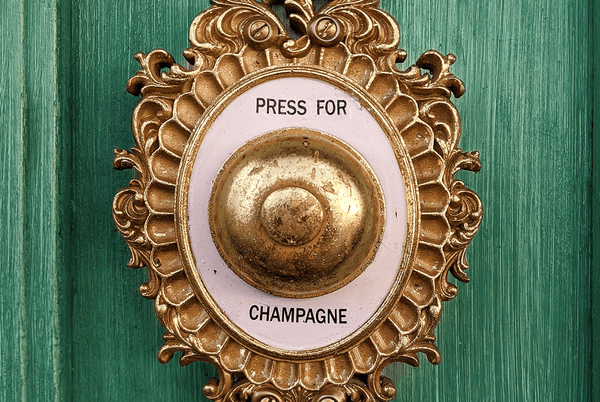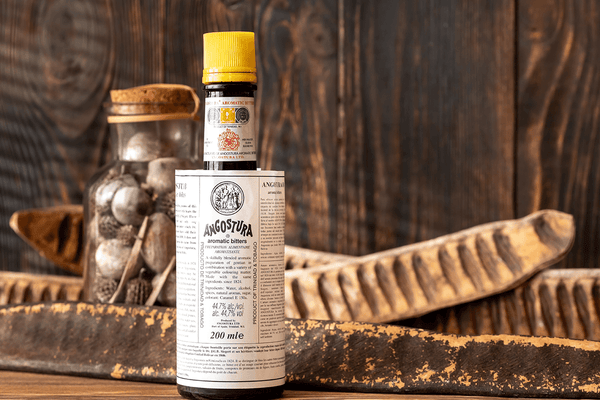BOURBON DISTILLATION:
A BRIEF OVERVIEW
It is the end of a long day, and you sit in your favorite chair and next pour yourself a glass of your favorite bourbon (probably Rabbit Hole) and wonder "what makes it taste so smooth.?"...

The taste of bourbon can change depending on a vast number of factors; the distiller, the mash bill, the grain preparations, etc. A high quality, premium bourbon will have the all-too-familiar hints of caramel, oak, and vanilla. However, the characteristics that contribute to what is described as a "smooth bourbon" can include many other factors such as the aging time and conditions, the distilling process, and the quality of the barrels. Smoothness may also be a result of calculated barrel entry proof, chill filtering and more. Bourbon is a complex art.
What Does Smooth Bourbon Mean?
Describing a bourbon as "smooth" can mean a lot of different things to a lot of different people. Generally speaking, those new to bourbon use the term quite often because they may not be able to fully articulate the bourbon tasting experience. For instance, a bourbon that is not chill filtered will contain more fusel oils, which can add "body" to the bourbon, therefore making the physical traits of the liquid more dense - having a silkier or more coating type of mouthfeel.
Another reason why many new to the world of bourbon might use the word "smooth" is actually quite simple. Bourbon is a high Alcohol by volume (ABV) or "proof" percentage.
Proof is one of the most important factors that make a drink taste smooth. Proof measures the amount of ethanol in a beverage, and ethanol is what makes a drink alcoholic. The term "proof" was created by the United Kingdom in an attempt to define alcohol as being 1.82 times the percentage of alcohol by volume (ABV). The United States changed this definition to twice the percentage of ABV.
Typically, the stronger the spirit, the harsher the taste. For example, a drink with 160 proof could burn your throat enough to make your eyes water and cough a little. While there are some exceptions, you'll find that the weaker the drink is in proof, the smoother it will taste. Most bourbon is made with 80 to 100 proof.
If someone is used to drinking beer (usually 4-6% ABV) or wine (8-12% ABV), taking a first drink of bourbon (40%-50%+ ABV) it can be an eye opening experience. The alcohol might immediately seem to have a "burning sensation" that can be felt form mouth all the way down the throat. So, the lower the ABV%, the "smoother" (AKA easier on the throat) a bourbon might feel.
Another thing to consider - bourbon (legally) is made with 51% corn. The other grains in the mash bill are left up to the distiller. If wheat happens to be the other dominant grain, the drink tends to be softer and easier to drink. On the contrary, bourbon made with higher amounts of rye will have spicier and slightly harsher undertones. To be clear, however, many bourbon lovers intentionally seek out high rye varieties because the also offer subtle complexities in flavor not found in high wheat (wheated) bourbons. Again, this is all personal preference.
What Makes a Bourbon Smooth?
Sometimes, a bourbon might be a very high proof, yet still taste as smooth as silk on the palate. How is this possible? The answer is sugar. Bourbons on the sweeter side tens to feel "smoother" to a new bourbon drinker. A lot of science there, but essentially it has to do with molecules, tastebuds and physics.
Oak barrels are charred to varying levels, which caramelizes the sugars which exist naturally deep within the wood. Charring the barrel helps give the spirit its caramelized flavor and color. The charcoal wood also acts as a filter for the liquid inside. The charring process causes the oak to become more porous, allowing the alcohol to seep into the wood slightly without leaking out. A smooth bourbon is also determined by the type of tree that's used for the oak barrel. Some oak barrels can leave bourbon tasting very smooth, while others can give a spicy undertone. It depends on the source of the trees as well as the relative climate they were matured in, if there were a drought season, the drying process of the lumber, etc. There are so many factors that can affect the taste of the finished bourbon.
As a note, it has been found that toasting and charring a bourbon barrel can increase the total sugar concentration as well as a myriad of additional congeners and esters (flavor molecules and compounds).
Distillers can also create what many describe as a smooth bourbon by placing the spirit in a used wine or sherry cask after the bourbon has satisfied legal aging requirements. A great example is the use of sherry casks. Sherry casks have been used to hold something sweet (sherry), and the residual sweetness deposited deep in the wood seeps into the finished bourbon.
Some say bourbon is undeniably considered smoother than whiskey; this may be because bourbon usually has a much higher percentage of corn in the mash bill. Corn contains a lot of natural sugars is quite sweet; creating a slightly softer/smoother taste than harsher grains like rye or barley common in some whiskeys. Of course, there are many other differences between bourbon vs whiskey besides the mash bill.
Smooth Bourbon: Additional Influences
Increasing the aging process in an oak barrel can help make bourbon smooth. Most bourbon is aged between two and six years. However, the longer bourbon is kept in a barrel, the mellower and smoother the bourbon can be. The drawback to a long aging process is both losing spirit (the angel's share) and a bourbon that might end up being too "oak dominant."
Temperature also plays a role in making bourbon smooth. Adding ice to a drink helps to cut some of the burning sensations. It's important to note that too much ice can cause dilution of the bourbon. This is where a whiskey stone would come in handy, chilling the spirit without diluting the liquid. You can also add a few drops of water to your glass to slightly dilute the drink, which can help cut some of the burning feeling. Adding a little water also helps to open up the flavor of the bourbon.
It's been said that bourbon can be split into four categories:
- Grain bourbon: Grain bourbon is typically aged for less than four years and has cornbread, oatmeal, wheat flakes, or rye undertones.
- Nutmeg bourbon: A nutmeg bourbon is made with more barley. The barley gives the spirit flavoring, such as eggnog, pumpkin spice, or roasted nuts.
- Caramel bourbon: While most bourbons will have caramel flavoring, some have more than others. A caramel bourbon is aged in barrels that have been charred (and sometimes toasted) to the highest degree (known as alligator char) and have notes of soft caramel candy. The caramelized wood sugars are what evoke the candy-like flavors of these bourbons.
- Cinnamon bourbon: Cinnamon bourbons are made with higher amounts of rye and taste a lot like this common kitchen spice.
Generally speaking, you'll find bourbon to be a smoother drink than whiskey. For those new to whiskey drinking, bourbon is a great place to start. Rye, barley, or wheat-based whiskey can be slightly harsher, whereas corn used to make bourbon helps to make it sweet.
Although there are many (many) additional factors that can determine if someone might consider a particular bourbon expression to be smooth - the last one to note is barrel entry proof. A low barrel entry proof can definitely "round out" a bourbon expression. Many distillers prefer a higher barrel entry proof because ultimately, it yields more bottled bourbon. This is because a high entry proof bourbon can be diluted with water at nearly a 1:1 ratio; so essentially, one barrel of high proof (ABV) bourbon could end up producing two barrels worth of bottled bourbon. If the bourbon is low barrel entry proof, the distiller can't add as much water to it - thereby yielding less bottled bourbon. The tradeoff, however, is worth it. A lower barrel entry proof bourbon retains much more of the complexity and natural flavors than one that has been heavily diluted. Many describe this difference collectively as being "smoother."
Bourbon Can Be Smooth...
There are online forums and some bourbon gurus that poke fun at those that use the term "smooth." However, this does not help those new to bourbon learn to describe what it is they like/dislike about a particular expression. It is far better to engage with those new to bourbon and ask them to try to be more specific as to what it is about an expression they find to be "smooth" or "harsh." It might be as simple as they find the vanilla note dominant and love vanilla. Or, they love the mouthfeel of a non-chill-filtered expression.
A person who states "this bourbon is so smooth" may simply be using a common descriptive word that is traditionally synonymous with "pleasant" - meaning they like that expression and most likely want to know about other bourbons which provide a similar experience. Agreed, saying a bourbon is "smooth" is rather vague and ambiguous, but this is a key learning opportunity for the new bourbon drinker as well as a teaching opportunity by those well versed in the world of bourbon. Inclusivity, and sincere guidance from experts is crucial to ensuring future bourbon drinkers all feel welcome to the art and craft enjoyed by so many.






